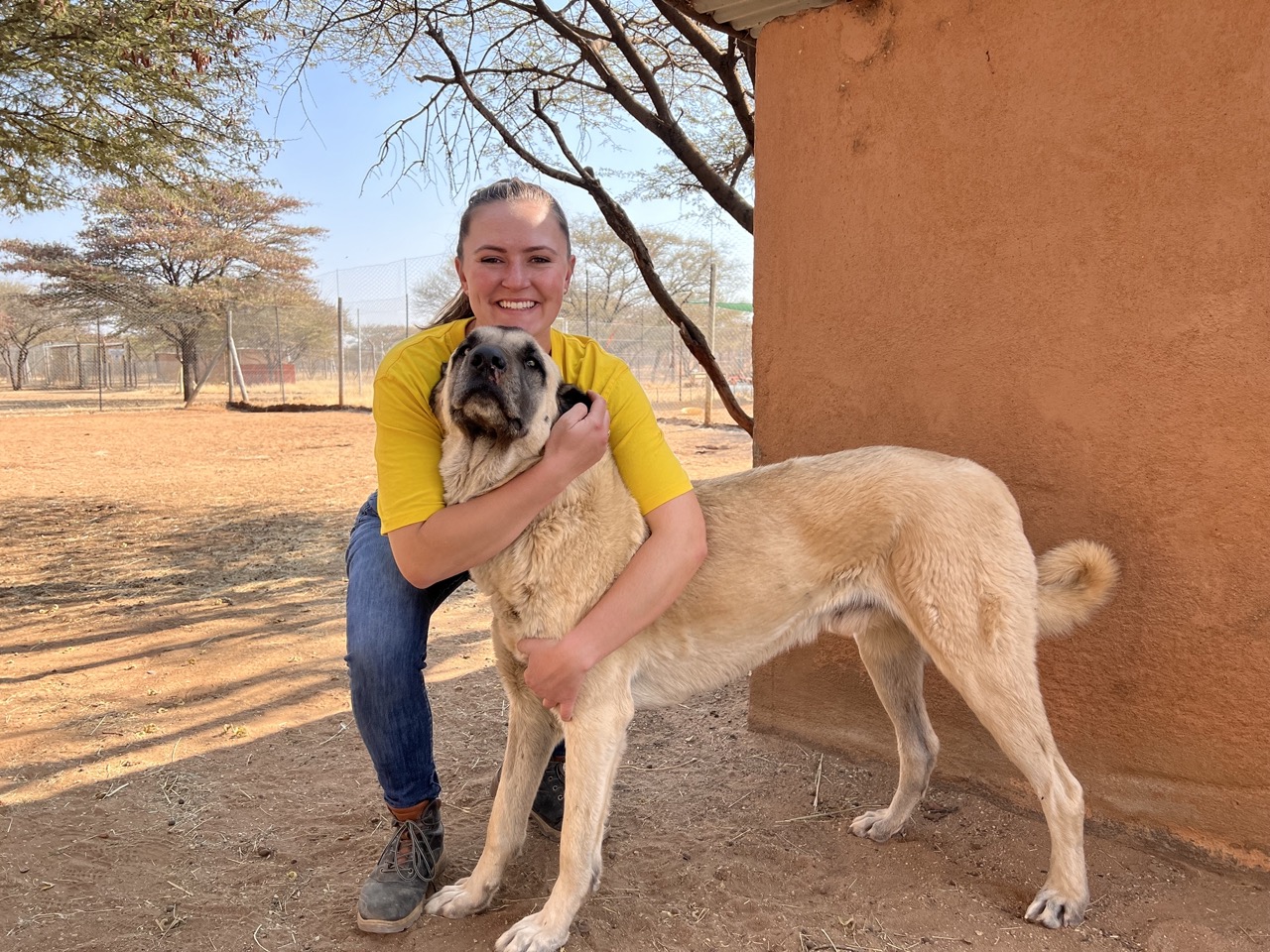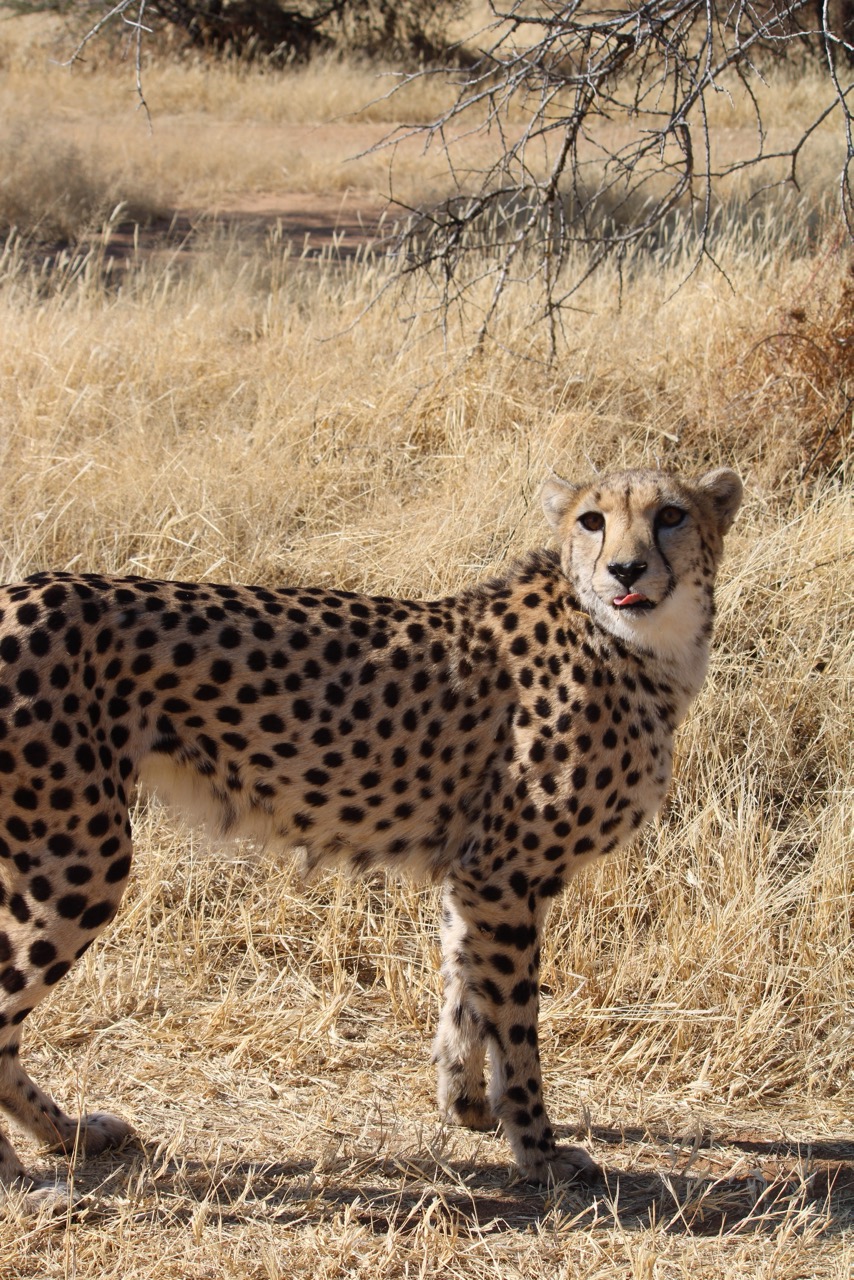Taylor Lindquist
I learned about the Cheetah Conservation Fund (CCF) at a talk by Dr. Laurie Marker during my Bachelor’s Degree at Cal Poly, San Luis Obispo in California. It has been my dream to become an intern here, and I am so happy I was able to after my second year in Veterinary School (8 years later!). How CCF conducts its conservation efforts (considering animal, human, and environmental health) struck a chord with me, and I could not wait to learn more. I had the incredible opportunity to intern in the veterinary clinic with Dr. Ana, Dr. Mercelin, Dr. Anahi, Vistoria, and Johanna. While at CCF, I saw many interesting cases, including mastitis, tick bite necrosis, an enucleation, gastric dilatation volvulus, wounds from leopard attacks, abscesses, hernia repairs, a mastectomy, and so much more. These cases included dogs, goats, sheep, cattle, horses, and cheetahs!
Our day typically started out doing goat and sheep checks in the morning. These herds are a part of a model farm to help teach other farmers about how livestock can live in harmony with wildlife. The farm also focuses on animal welfare efforts and helps train the livestock guardian dogs. During our vet checks, we look at all the animals for signs of illness, lameness, or any other abnormalities that could make them a target for predators if they fall behind the herd. The team looks through the Boer goat, Damara sheep, and Dairy goat herds before they go out to enjoy the day in the brush. I have a great passion for small ruminants and loved starting the day off looking through all these herds. Not only did I get to see different diseases that we don’t have in the US, but I also got to learn more about the Namibian farm life and expertise from the herders themselves. I even went to town with the herd manager (Calum) and Dr. Ana to help pick out new herd sires for the upcoming breeding season. It was an excellent opportunity to talk to other producers about their herds, disease testing, and pick out new genetics to bring into the CCF herds.
Another group of animals that the vet clinic would work with frequently that protect the goats and sheep were the livestock guardian dogs. There are about 27 Anatolian Shepherds at the CCF center, and they are a staple part of preventing human and wildlife conflict and protecting the herds. They have the core group of breeding dogs that need yearly medical checks, dental procedures, estrus cycle-detecting (heat detection), and wound management when necessary. Most dogs are working dogs and go out with the herds daily into the brush. The dogs are examined morning and evening for anything that could have happened while they were with the herd for the day.
Of course, the cheetahs are an essential species that the clinic takes care of and what the public comes to see. The clinic is right next to the feed camps where the resident cheetahs (who cannot be released into the wild) eat once a day. This is great for examining the animals every day from a distance and monitoring for any signs of problems. The cheetah keepers (Lea, Becky, Justin, and Nicole) do all the daily care for all the cheetahs and are a crucial component in monitoring and reporting any animal problems. It is truly a team effort to provide the best care possible for these beautiful wild animals that are either permanently or temporarily in captivity. The cheetahs are comfortable in their natural environment, and we only bring them into the clinic if it is necessary for their health. Ideally, we don’t want to stress out the animals because stress can cause health problems. If we bring one of the cats in for an exam, x-rays, or treatment, the work is done safely, efficiently, and quickly to return the cat to their comfortable home as soon as possible. I got the opportunity to help with some of the cheetah workups while I was there. CCF is contacted by farmers when cheetahs are caught on a farm and requested to be relocated. The animal is brought to CCF for a medical exam, measurements, sample collection, and collar for tracking. After an assessment, the animal is monitored, and a location is determined for release. If the cheetah has any health issues (for example, it needs dental work), plans are made for these procedures once the animal has recovered. After that, plans for release back into the wild are made. It was such a fantastic opportunity to take part in these workups. I even got to do a workup on a wild leopard that lives around CCF!
I am thankful for this opportunity to learn, challenge myself, and work with the best team and these amazing animals. Thank you to everyone that made this internship possible. It was indeed an experience of a lifetime!


